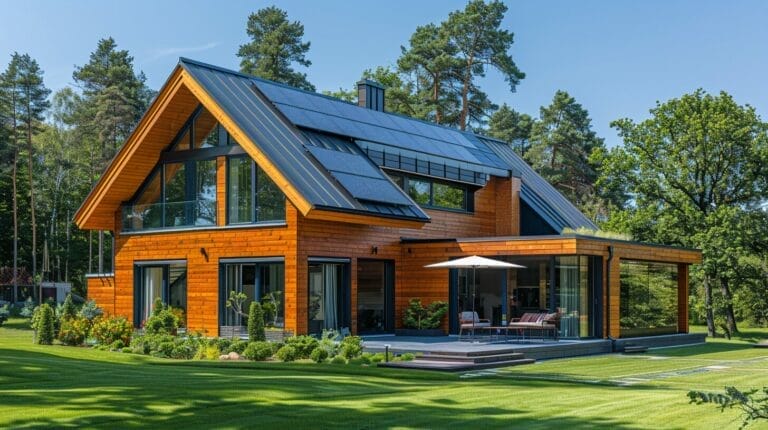Are LED Lights Toxic? Debunking Myths and Promoting Safety
Have you ever asked the question, are LED lights toxic? It’s a question that often lingers in the back of our minds as we go about our daily lives, surrounded by these energy-efficient bulbs.
Contrary to popular belief, LED lights are not inherently toxic. In fact, they are a safe and eco-friendly lighting option, partly due to their ability to minimize blue light exposure.
To ensure our safety and well-being, let’s shed some light on the matter and debunk the myths surrounding LED lighting safety. We need to dig deeper and explore the facts and science behind LED lights and their lighting technology.
Key Takeaways
- LED lights do not contain toxic mercury and are considered safe and eco-friendly, a key aspect of LED lighting safety.
- Blue light exposure from LEDs can impact sleep and eye health, but advancements in LED tech reduce blue light emissions.
- LED lights have advantages such as energy efficiency and long lifespan, but some individuals may experience health issues due to flickering.
- To ensure safety, choose quality LED lights, use dimmers designed for LEDs, and properly install and maintain them.
Understanding the Basics of LED Lights and Their Composition
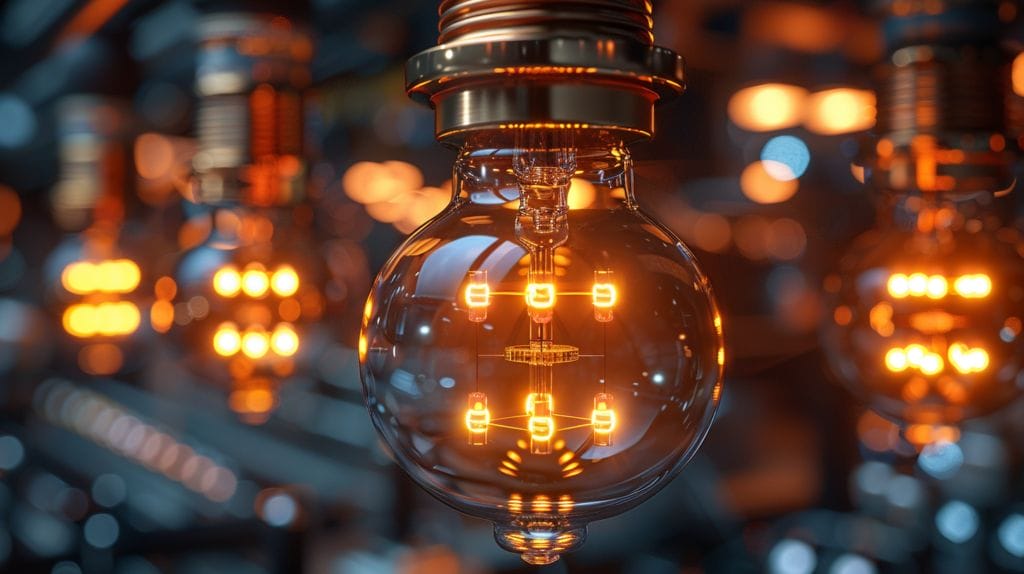
LED lights, or Light Emitting Diodes, are a revolutionary innovation in the lighting industry. Unlike traditional incandescent bulbs, which use a filament to produce light, LED lights work by passing an electric current through a semiconductor material, making them a more energy-efficient lighting technology. This material is made up of different components, each playing a crucial role in the functioning of the LED.
At the heart of the LED is a semiconductor chip, typically made from materials such as gallium nitride or indium gallium nitride. Surrounding the chip is a transparent lens that protects it and helps to focus the light, a feature that enhances the effectiveness of LED lightbulbs and supports the utilization of light therapy. Additionally, there are wire bonds that connect the chip to the electrical circuit, allowing for the flow of electricity.
LED lights don’t contain toxic components like mercury, which incandescent bulbs contain, making them a safer option for both health and the environment. This makes LED lights a safer and more environmentally friendly option. However, it’s important to note that some LED lights may contain trace amounts of other potentially harmful substances, such as lead, although the levels are typically very low and well within safety standards.
Health Risks Associated with LED Lights: Facts and Myths
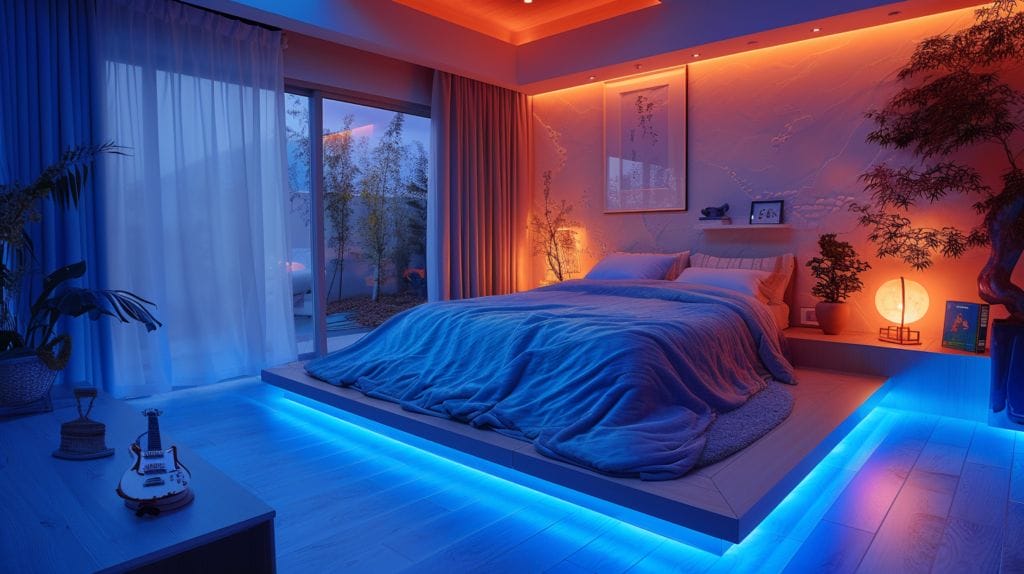
Two key concerns often discussed are blue light exposure from LED lightbulbs and LED flickering. Blue light exposure, especially from artificial sources like LED lightbulbs, has received attention due to its potential effects on sleep patterns and eye health, though it’s important to differentiate it from the natural blue light from the sun.
However, the amount of blue light emitted by LED lights is significantly lower than that emitted by electronic devices such as smartphones and tablets. Additionally, advancements in LED technology have allowed for the development of bulbs with reduced blue light emissions, promoting safety and minimizing health risks.
Flickering, one of the key concerns associated with LED lights, often results from issues with the LED emitters themselves. Some LED lightbulbs may flicker at a frequency that is imperceptible to the human eye but can cause discomfort and even trigger headaches or migraines, an important consideration in the causes of LED lighting effects.
It is important to choose LED lights that have undergone rigorous testing and meet safety standards to minimize flickering.
To provide a clearer picture, here is a table summarizing the health risks associated with LED lights:
| Health Risks | Facts | Myths |
|---|---|---|
| Blue Light Exposure | LED lights emit lower amounts of blue light compared to devices such as smartphones and tablets | LED lights are as harmful as smartphones and tablets |
| Flickering | Imperceptible flickering may cause discomfort for some people | All LED lights flicker and cause health issues |
| Safety | Advancements in LED technology have reduced blue light emissions | LED lights pose significant health risks |
Practical Applications of LED Lights: Pros and Cons
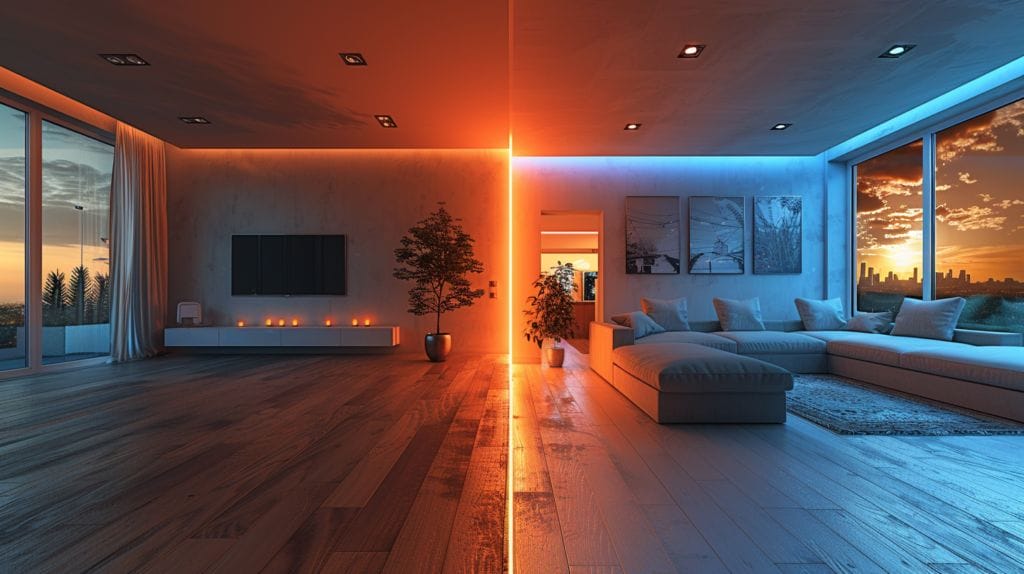
LED lights offer numerous benefits, making them a popular choice for residential and commercial lighting applications. One of the main advantages is their brightness. LED lights are known for their high luminous efficacy, producing a bright and efficient light output. This makes them ideal for illuminating large spaces or areas that require high levels of illumination.
Another advantage of LED lights is their energy efficiency, making them a prime choice for both indoor and outdoor lighting. LED lights consume significantly less energy compared to traditional lighting options, such as incandescent or fluorescent bulbs. This not only helps reduce energy costs but also contributes to environmental sustainability by reducing greenhouse gas emissions.
LED lights are also known for their long lifespan, which can be a major cost-saving factor in the long run. With proper maintenance, energy-efficient LED lights can last up to 50,000 hours or more, significantly longer than traditional lighting options.
However, there are also potential drawbacks to consider. Some individuals may experience discomfort or health issues due to the flickering of standard LED lights, which can emit blue light. Additionally, the initial cost of LED lights may be higher compared to traditional lighting options.
Navigating the Flicker Issue in LED Lights

One common cause of flicker in LED lights is the use of incompatible dimmers. Dimmers are devices used to adjust the brightness of lights, and some traditional dimmers aren’t designed to work with advanced LED lights. Using these dimmers with LED lights can lead to flickering issues, contradicting the expectation for light exposure to be diminishing.
To avoid flicker, it’s important to use dimmers that are specifically designed for LED lights. These dimmers are usually labeled as compatible with LEDs and are designed to work with the lower voltage and different electrical characteristics of LED bulbs.
Another way to reduce or avoid flicker in LED lighting is to ensure that the LED lights you purchase are of high quality, perhaps even incorporating features like red light therapy. Cheap or low-quality LED lights may not have the necessary components to reduce flicker effectively. Look for LED lights that are labeled as flicker-free or have a high-frequency driver to address concerns about LED flickering.
Are LED Lights Safe for Everyday Use, Despite Potential Risks in Light Therapy?
LED lights are generally safe for everyday use, but it’s important to be aware of the potential risks of LED therapy. While LED lights have been used in light therapy for various conditions, there are some concerns about the potential risks of LED therapy, such as eye strain and skin sensitivity.
Making Informed Choices: Selecting the Right LED Lighting Options
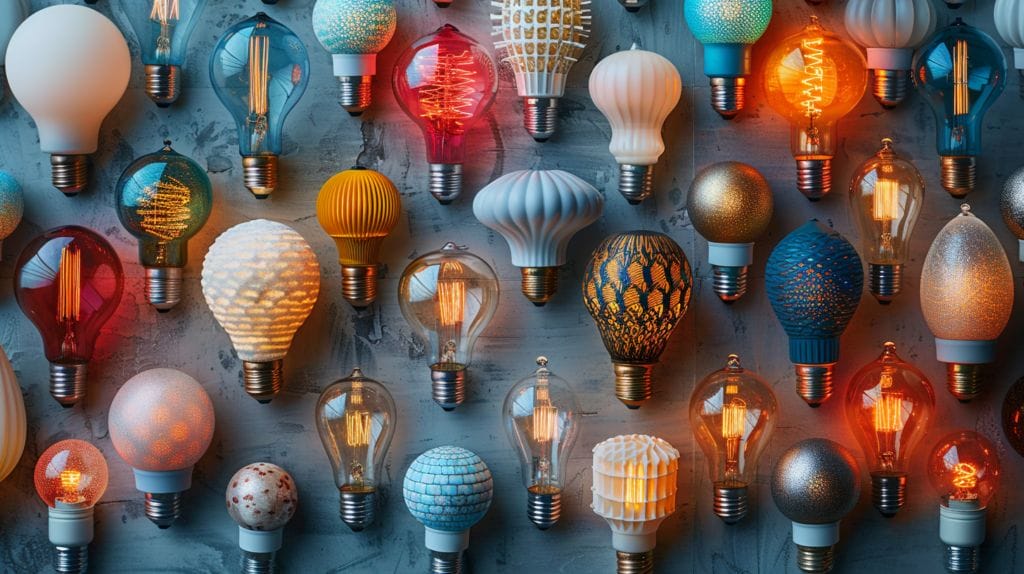
When choosing LED lighting options, prioritizing safety, efficiency, and the potential for LED lights in your home to enhance alertness is vital. LED lights are safe and energy-efficient, making them an ideal choice for health-conscious and environmentally-friendly individuals.
Deciphering Labels
Pay attention to the labels on LED light bulbs, keeping health in mind. Look for certifications like Energy Star and UL Listed on standard LED light bulbs. These indicate that the product has undergone rigorous testing and meets industry standards.
Considering Alternatives
Consider exploring alternatives to traditional LED lamps, such as those offering light therapy or more natural light exposure. Options such as warm white lighting provide a softer, more natural light, which CRI indicates less blue light, aligning with the expectation for blue light exposure to be diminishing. These can create a cozy and inviting atmosphere in your space.
Making Health-Conscious and Environmentally-Friendly Choices
Opt for LED lights free from harmful chemicals like mercury and lead. Additionally, look for LED lights that are recyclable or have a long lifespan to ensure that they minimize environmental impact while addressing concerns about LED lighting sustainability. This not only reduces waste but also minimizes the environmental impact, a significant achievement for energy-efficient LED bulbs containing no harmful substances.
Conclusion
In conclusion, LED lights aren’t toxic, and debunking the myths surrounding their safety, including concerns about the LED driver and the wavelengths they emit, is crucial. Understanding the basics of LED lights and their composition is essential to make informed choices.
While there are health risks associated with LED lights, separating facts from myths is important. LED lights offer several practical applications with their pros and cons, including mitigating the negative health effects potentially associated with prolonged exposure to artificial light.
Navigating the flicker issue, one of the primary concerns about LED lighting, is vital for a comfortable lighting experience. Ultimately, selecting the right LED lighting options, including looking for bulbs with exposure to natural light qualities, is key to promoting safety and reducing negative health effects.
Frequently Asked Questions
Are LED lights safe compared to incandescent light bulbs?
Yes, LED lights are generally considered safe and much more energy efficient compared to incandescent light bulbs. They produce light more efficiently, resulting in less heat and no harmful substances like mercury, often found in CFL bulbs, highlighting the environmental benefits of LED lightbulbs.
Can exposure to blue light from LED lights affect my sleep?
Yes, overexposure to blue light from LED lights, especially during evening hours, can disrupt your circadian rhythm and make it harder for you to fall asleep. This is because exposure to blue light during evening hours can decrease the production of melatonin, the hormone responsible for regulating sleep.
What are the advantages of using LED lights in home lighting applications?
LED lights offer several advantages for home lighting applications, including higher energy efficiency, longer lifespan, reduced environmental impact, better durability, and the ability to produce light in a variety of colors and brightness levels.
How do LED lights work and are they harmful to your health?
LED lights work by passing an electrical current through semiconductor material, which emits light. This process is highly efficient and results in minimal heat production. Regarding health and safety, while there are concerns about exposure to blue light, overall, LED lights, especially those designed for warm lighting, are not harmful to your health when used appropriately.
Is there a link between LED lighting and age-related macular degeneration?
Some studies suggest there may be a potential link between exposure to blue light and the risk of age-related macular degeneration due to the photochemical damage that high-energy visible light can cause to the retina. However, the blue light emitted by LED lights is generally not of sufficient intensity to cause damage when used normally.




